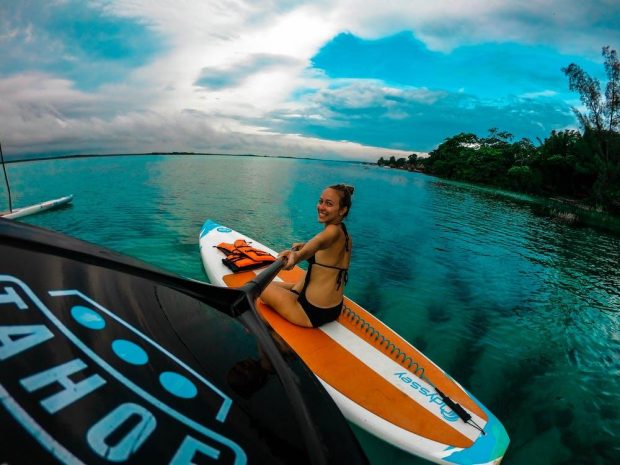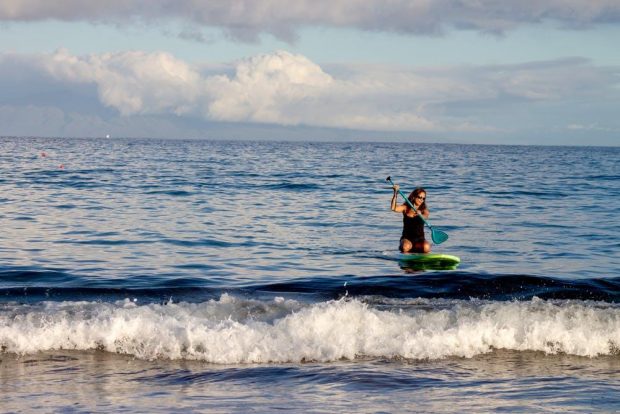Interested In Paddleboarding? Here’s How To Get Started
Paddleboarding is an exciting activity, and the interesting part is that it can be done as a sport or a recreational activity. If you are looking to build your core strength while having fun exploring nature, then this is for you. This article is very beginner-friendly, and if you read through to the end, you should be pretty good at paddleboarding.

Paddle Boarding Equipment
Here is all of the necessary equipment that you need for paddleboarding.
A Paddle Board:
This is the first and most important equipment that you need for paddleboarding. Please note that a paddleboard is not the same as a surfboard, a kayak, or a canoe.
A Paddle:
This is your steering device. It is essential to know the best paddle to pick. There are two major types of paddles:
- The Pro Paddle
- The Adjustable Paddle
To get the perfect paddle, you need to add at least 10% more to your height. The adjustable paddles are a personal favorite because you can adjust them to the perfect length for your height and enjoy much more your Outdoor Play.
A Floatation Device:
They come in 2 major types:
- A belt
- A vest
You can choose between any of these two. Most people prefer the belt because it gives room for freedom of movement. Your level of expertise in paddleboarding does not matter when it comes to using a floatation device. In some countries, it is an offense to go paddleboarding without this safety device, so you might want to be sure that you are not breaking any laws if you decide not to wear one.
A Leash:
If you fall off your board while paddleboarding, don’t worry about it too much as that’s where the fun is! But you don’t want to lose your board. You need a leash so that you are attached to your board at all times. Although this is not a necessity, you would need it for safety purposes at least.
There are two types of leashes:
- The coiled leash
- The straight leash
The coiled leash is used in calmer waters, and it brings the board back to you when you fall off. However, the straight leash is used in turbulent waters, and it does not draw the board back to you to prevent injuries.

Paddle Boarding Positions
There are two primary positions that you can use for paddleboarding.
- The Kneeling/ Starting Position:
This is the best position for a beginner. It gives you all the balance you need so you can focus more on learning how to paddle properly. You want to be sure you can paddle in this position very well before moving to the standing position.
2. The Standing Position:
This position is a more technical one, and you need to follow a few steps to get into this position. These steps require a lot of practice, so don’t feel bad if you don’t nail it on the first attempt. You can also get a stand-up paddle board lesson in Santa Barbara if you are in the area. For this position, You want to lay your paddle on the board when you are trying to get on, so it does not disturb you. If you place it properly it won’t fall off. Place both hands on the board and try to hold it steady. Now lift one knee and place it on the board while making space for the other. When both knees are on the board, gently get into the kneeling position. Then you get into a squat position and gently stand up and start paddling.
The Best Paddleboard for a Beginner
There are different types of paddle boards that you can use, and each one has its unique features and uses. The types of paddle boards that we have are:
- The All-Rounder Board
- The Inflatable Board
- The Yoga Board
- The Touring Board
- The SurfBoard
The All-rounder board is the best board for a newbie because of its length, stability, and overall functionality. It can be a great substitute for all the other types of boards used for paddleboarding. When choosing the perfect paddleboard, your body weight determines what length is best for you. If you weigh below 170lbs you should get at least a 10ft board. If you weigh above 170lbs then you should get an 11ft board minimum.
Although depending on the board brand that you are buying, most companies would specify the maximum weight that a board can take. You don’t want to get a board with a limit that you are close to. There should be a significant difference between your weight and the maximum board weight. This is so that it does not affect the stability and performance of the board.
For the width of the board, as a beginner, your focus should be on balance first before speed. For this purpose, you will want to get a wider board. You can get one with a 32-34 inch width. As you become better and more balanced you can opt for a narrower board.
Paddleboarding is a fun and exciting sport once you get the hang of it. If you want to learn, get someone to teach you and practice as often as you can. The tips we have shared in this post should get you off to a great start.
